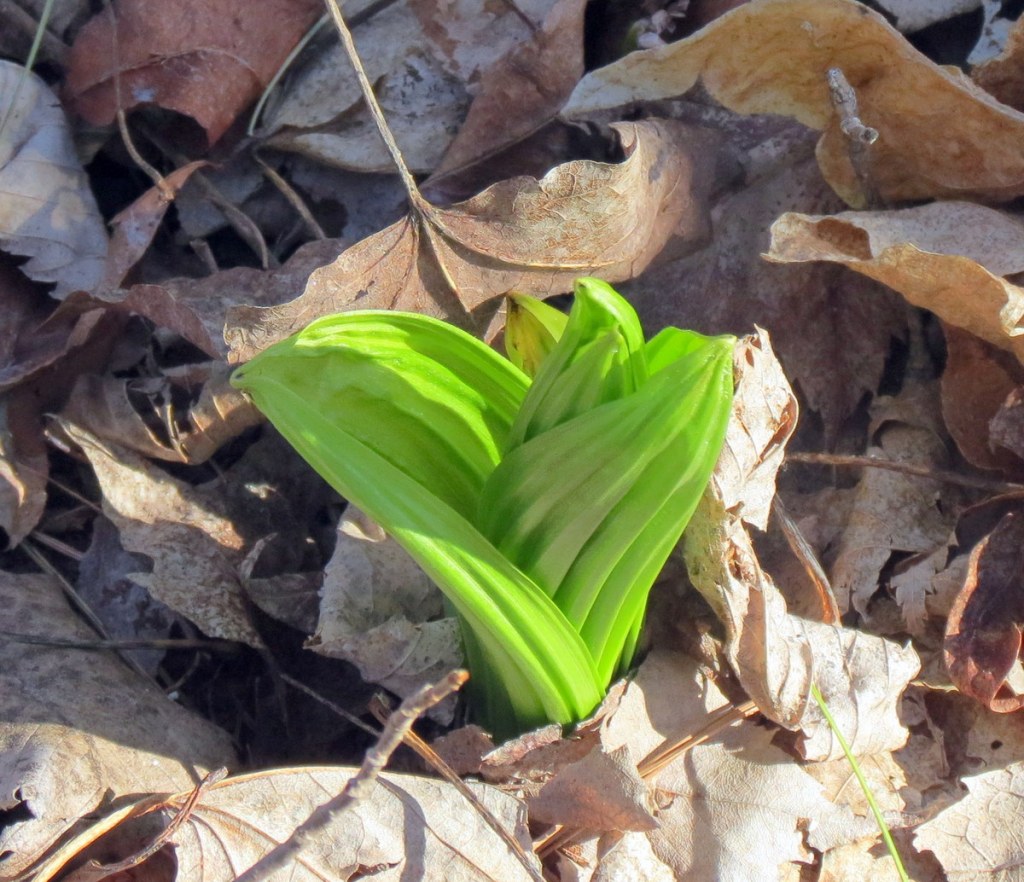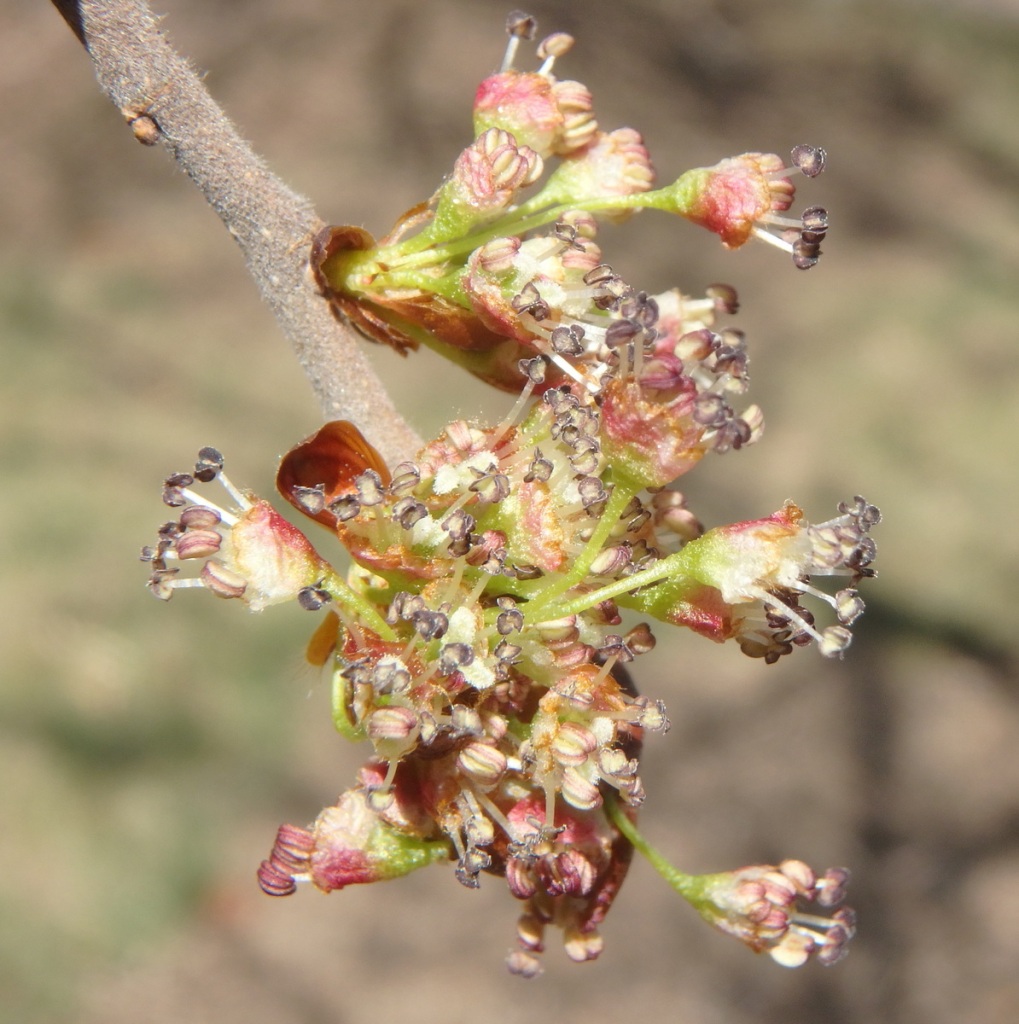
Red maple season (Acer rubrum) is in full swing now, and the hillside are starting to take on that reddish haze that is so common to this area in spring. It’s beautiful but so far in my experience, impossible to capture with a camera. Maybe I’ll do another climb and try again.

The female flowers, tiny scarlet stigmas, have appeared right on schedule and the male flowers continue to bloom. They might not look like much but to me they are as beautiful as any other flower, especially because they tell me that spring has arrived.

The male flowers cover the whole spectrum of blooming. Some have shed their pollen and are dying off while others are justs starting to open, as these were. Sugar maple flowers haven’t opened yet but it shouldn’t be too much longer. Once they open that will be the end of the maple sugaring season. I’ve heard it was a good year, though shortened because of the early warmth. I’m sure it was welcome after a terrible year last year.

One morning I went to one of the spots where I know coltsfoot (Tussilago farfara) grows and saw nothing at all. Then that afternoon, after a day in the 50s F., there they were.

Coltsfoot isn’t native but it is still welcomed as one of our earliest blooming wildflowers. It won’t be too long before the plant’s leaves apper, and that will mean the end of their season. I was happy to see them; they helped push winter a little further back into my memory.

I know where to go to find almost all of the spring flowers that appear in these posts, but little chickweed is always a surprise. I never know when or where it will pop up. I’m not sure which one it was but it was pretty.

American hazelnuts (Corylus cornuta) continue their spring journey with the male catkins just starting to release pollen. I was happy to get this shot because it shows the transition from what the catkins look like in winter, there on the right, to what they look like in spring, on the left. As can be seen, the catkins lengthen by quite a lot and turn golden.

But that isn’t all that happens to the catkins. If you think of a catkin as a spring, when the spring gets pulled the coils are pulled apart, and that’s essentially what happens to a catkin. Each of the tiny manta ray like parts are bud scales. They have a white fringe and a blackish “tail.” As the central stalk of the catkin lengthens in spring the spirally arranged buds slowly pull apart, and under each tiny bud scale the actual flowers are revealed. The hundreds of flowers are the very small, roundish golden bits under each bud scale; maybe 3 to 5 per scale. To me all of this is simply a miracle. I can’t think of any other way to describe it.

And there were the tiny, sticky female flowers, already dusted with pollen grains.

Just after the hazelnuts start taking care of their spring business the alders (Alnus) begin, so as soon as I see golden hazelnut catkins blowing in the wind I start checking the alders. The two plants aren’t that different really, as far as strategy goes. It’s easy to see the way alder buds are arranged in spirals just like the hazelnuts, even in catkins that haven’t opened. Spirals are nature’s way of packing the most life into any given space and you see them used in everything from galaxies to our own inner ear.

I think alder catkins are more attractive than hazelnut catkins because of the contrasting purple and yellow colors. The brown and purple scales on the catkin are on short stalks and there are three yellow/ green flowers beneath each scale, each with a lobed calyx cup and three to five stamens with anthers, which are usually covered in yellow pollen. This was the only bush I found with open catkins and it was very early, I thought. Soon though, all the bushes that line pond edges will look like they’ve been strung with jewels.

I wanted to see what the plantain leaved sedge (Carex plantaginea) was doing. It looked fine but it was too early for it to be flowering. It is one of the earliest though, so it shouldn’t be too long.

The other day I saw a Forsythia trying to bloom.

And the next day it had bloomed with two or three blossoms showing, but the day after that it got cold again, with a low of 15 degrees at night, so I’ll have to go see how it’s doing. Many of the plants that grow here have built in cold resistance but since Forsythia isn’t native it might have suffered.

Scilla have started blooming as well. I love the color of these small blossoms. I once worked for some people who had a large drift of scilla, thousands of them, under some old oaks, and it was beautiful.

There was no wind but this one looked as if it was in a gale. It was also beautiful.

Reticulated irises have finally appeared. This is a strange plant, because some years it blooms before crocuses and other years after, so I’ve learned not to count on it doing anything that I expect it to.

This was my favorite iris, but there was only one. I’ve heard that they will kind of fade over the years so that what was once twenty can become just one or two.

Snowdrops have fully opened.

This little crocus is one of my favorites, but more for its beautiful outside than its plain white inside. My blogging friend Ginny tells me small crocuses like these are called snow crocuses, which I guess nobody I gardened for years ago ever grew or wanted, because I had never heard of them. They’re very pretty little things.

Hyacinths are up and showing color.

And magnolia bud scales are starting to split open, because the flowers inside are now growing. It won’t be long before they show themselves.

Daffodils, the last time I saw them, were heavily budded and I expect by now many have opened. I hope to be able to show them to you in the next flower post if the cold didn’t get them.

It’s hard to say when the hellebores will open but they were showing some fine looking big red buds. Though the buds are red, the flowers on these plants will be a kind of not very exciting light, greenish color.

I’ve met many people who didn’t think spring was anything special, and some who have even said they didn’t like it at all. I have to say that I felt sorry for them because I’ve never understood how anyone couldn’t become excited by the promise and hope of the season, and why the beautiful miracle of the earth awakening once again didn’t make them want to sing. I’ve loved spring forever; since I was a very small boy, and it still just blows my heart open and makes me want to run and play and see and smell every flower that blooms and see every new leaf unfold. While I was taking some of these photos I heard the loud quacking of wood frogs, and then the next day I heard spring peepers. The grass is starting to show green in places and all of the birds are singing their beautiful songs of spring, and how could you not love it? If you don’t love it, I hope you can at least put up with it because I’ll be showing a lot more of it in future posts.
Free your heart from your mind. Embrace wonder for one moment without the need to consider how that wonder came to be, without the need to justify if it be real or not. ~Charles de Lint
Thanks for coming by.







































































